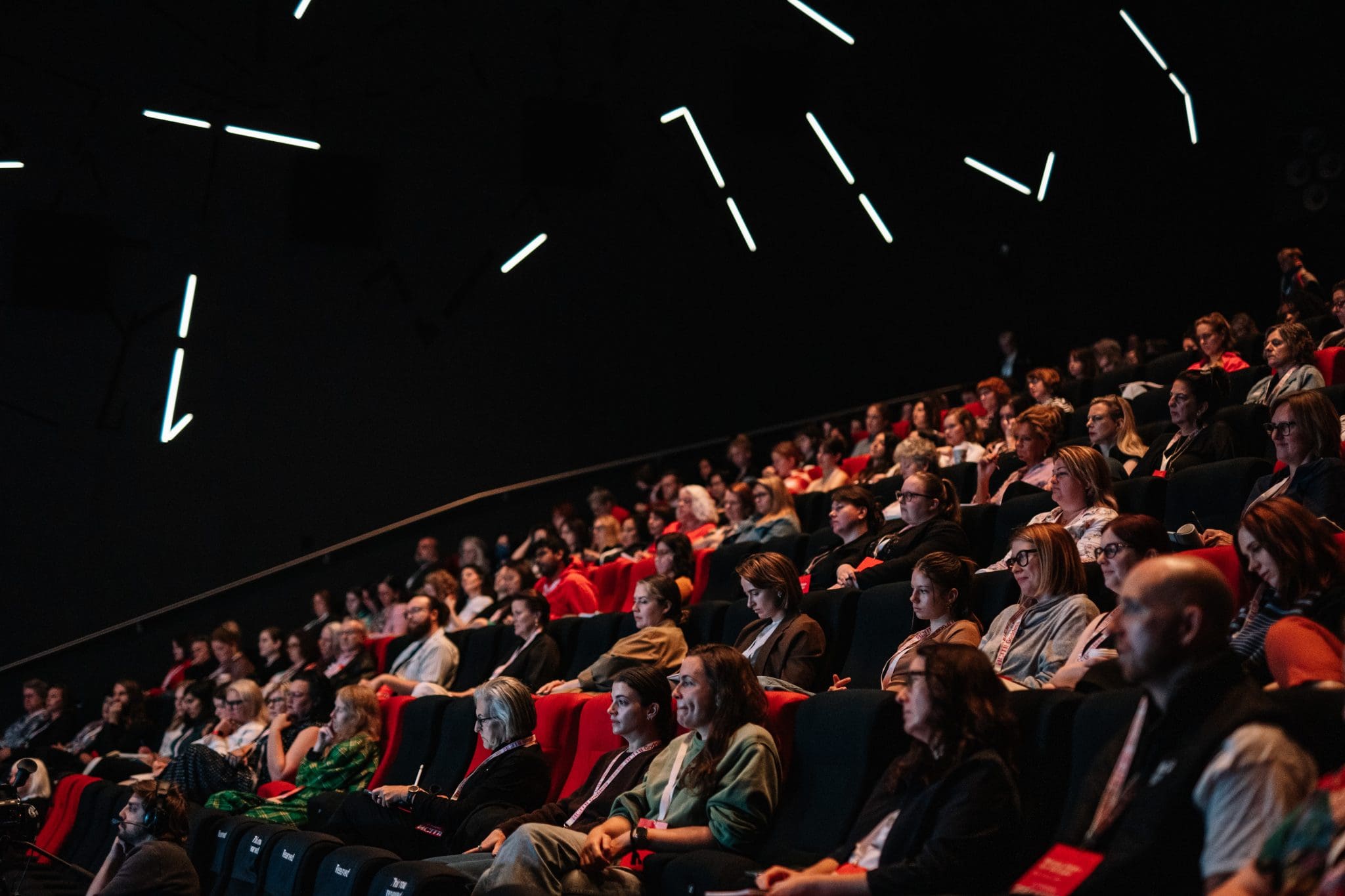Diversity. Ageing. Bodies. These were the three focuses of ACMI’s — Australia’s museum of screen culture — recent Being Seen on Screen conference. Held in partnership with the Geena Davis Institute on Gender in Media, the day was a celebration of the ways that representation has slowly improved on and off screen, whilst provoking thoughtful consideration and discussion about the areas where more change is needed. I was lucky enough to pop down to Melbourne last week to attend the conference.
After opening with a Welcome to Country and then an Introduction from Rachel Griffiths, the conference began with a panel focussed on setting the scene. President and CEO of the Geena Davis Institute on Gender in Media, Madeline Di Nonno, and members of the Screen Australia Gender Matters Taskforce, Anusha Duray and Lisa French, spoke about the current state of representation in the media both in Australia and the United States.
Di Nonno told the audience about the UCLA Hollywood Diversity Report, which found that in 2022, women only directed 14.6% and wrote 27% of the top theatrical films. French, the Dean of the RMIT School of Media and Communication, spoke about the work of the Gender Matters taskforce, which seeks to improve the inclusion of women in the creative process. Duray, who is also part of NITV, described feeling bitter but hopelessly hopeful about the future of representation in screen culture.
This provided some context for the next panel, titled “Seeing ourselves on screen.” This panel featured Pallavi Sharda (Indian-Australian actor), Elaine Crombie (Pitjantjatjara and Yankunytjatjara actor), Kauthar Abdulalim (Muslim producer and director) and Dr Julie Peters (trans woman and activist), with journalist Jan Fran moderating.
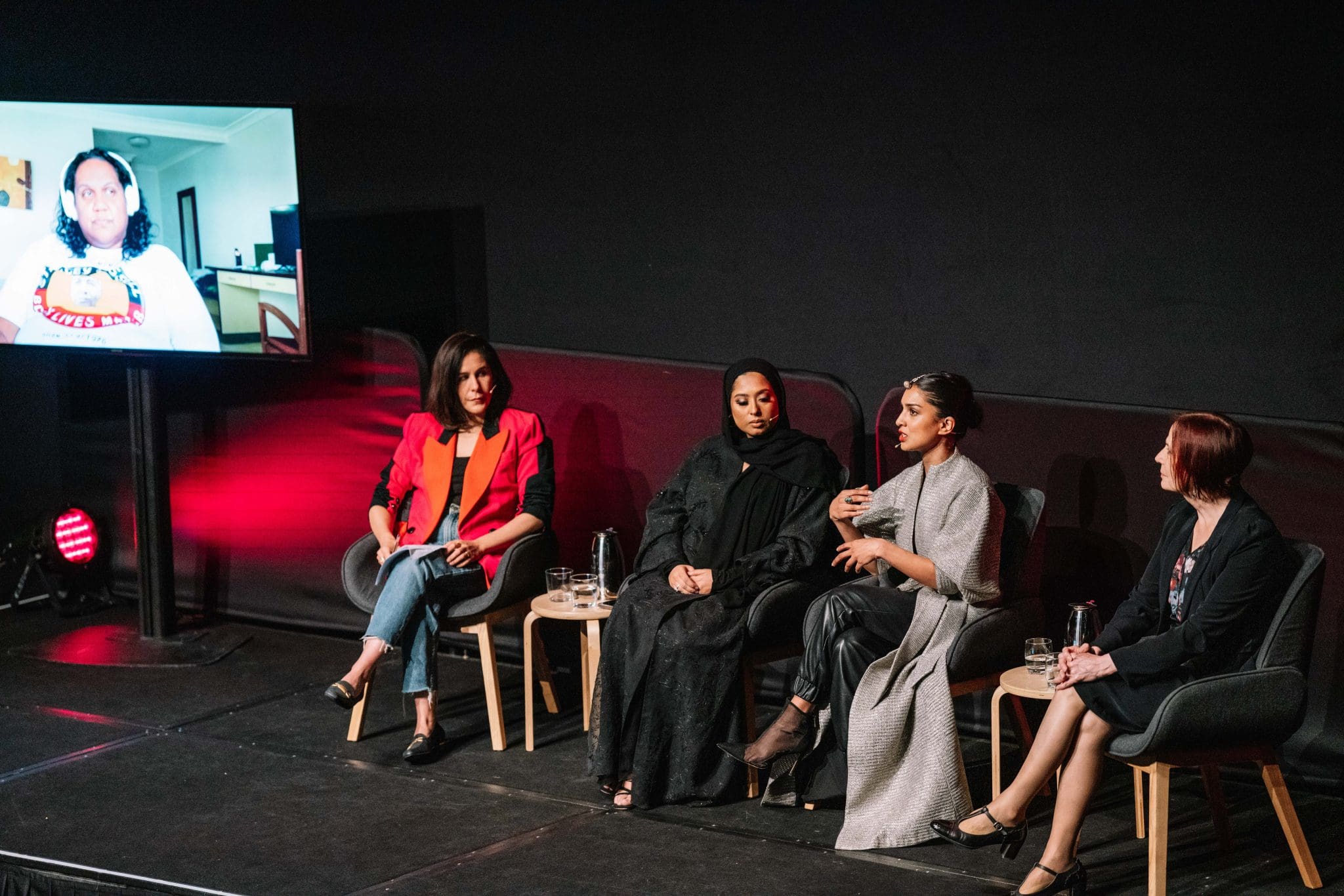
Sharda shared her experience in the screen industry, after she was told by teachers that she wouldn’t end up in broadcasting or acting. Finding that the more well-worn pathways for Australian actors (like starting on Home and Away before moving to LA) weren’t available to her, Sharda encountered challenges when returning to Australia, only to find that ‘I’m a Bollywood actress’ didn’t mean anything here.
Abdulalim emphasised the importance of authenticity in storytelling, to go beyond the surface level exploration of communities that creators weren’t a part of. Crombie echoed these sentiments, emphasising ‘nothing about us, without us.’ Peters spoke about the importance of demythologising trans experiences to balance out negative stories with positive ones as she moved from behind the camera to in front of it.
These speakers spoke passionately about the importance of taking space and making space. For Sharda, it is about subverting the gaze and the role that you are asked to play. Through this, you can escape being characterised as the other, which is necessary to engage with the nucleus of culture making.
With every panel, I found myself more interested in the state of the screen industry and how we could challenge the status quo. This left me particularly excited and ready on the edge of my seat to see Geena Davis — actor, founder and chair of the Institute, and almost Olympic level archer among other things — deliver the keynote address.
Davis spoke about the impact that media images have on the real world — whilst I sat a mere three rows away enthralled by hearing and seeing her speak in person. When Davis began the Institute and initially spoke to producers and creators about the lack of diversity in kids television, many expressed that it wasn’t an issue. Despite this, their unconscious bias was apparent to Davis. As a self-confessed data nerd, Davis developed the institute to provide the data to challenge this status quo.
In conversation with Dr Emma Fulu (Creator of the Equality Institute), Davis emphasised that change happens when big companies decide to make strong, creative decisions to change their ways. Davis spoke about the Spellcheck for Bias, which was developed by the Institute with University of Southern California’s Signal Analysis and Interpretation Laboratory, to catch any bias written into the script before you cast it. Davis explained that when things happen offscreen, they can happen offscreen. If you can see it, you can be it. Fulu suggested that it was a chance for life to imitate art.
Di Nonno returned to talk with Sigrid Thornton, Rachael Maza, Sophie Hyde and Anousha Zarkesh about ageing on screen. Thornton emphasised that newness and discovery is not only for the young, as people are always learning through challenge, learning all the time. No one is already a finished product. Maza suggested that the theatre provided more space for diversity generally, for both age and culture. Hyde noted that whilst there was lots of progressive work being written, not a lot of it is being funded. Zarkesh encouraged older audiences to be more political and to demand what they wanted to see on screen.
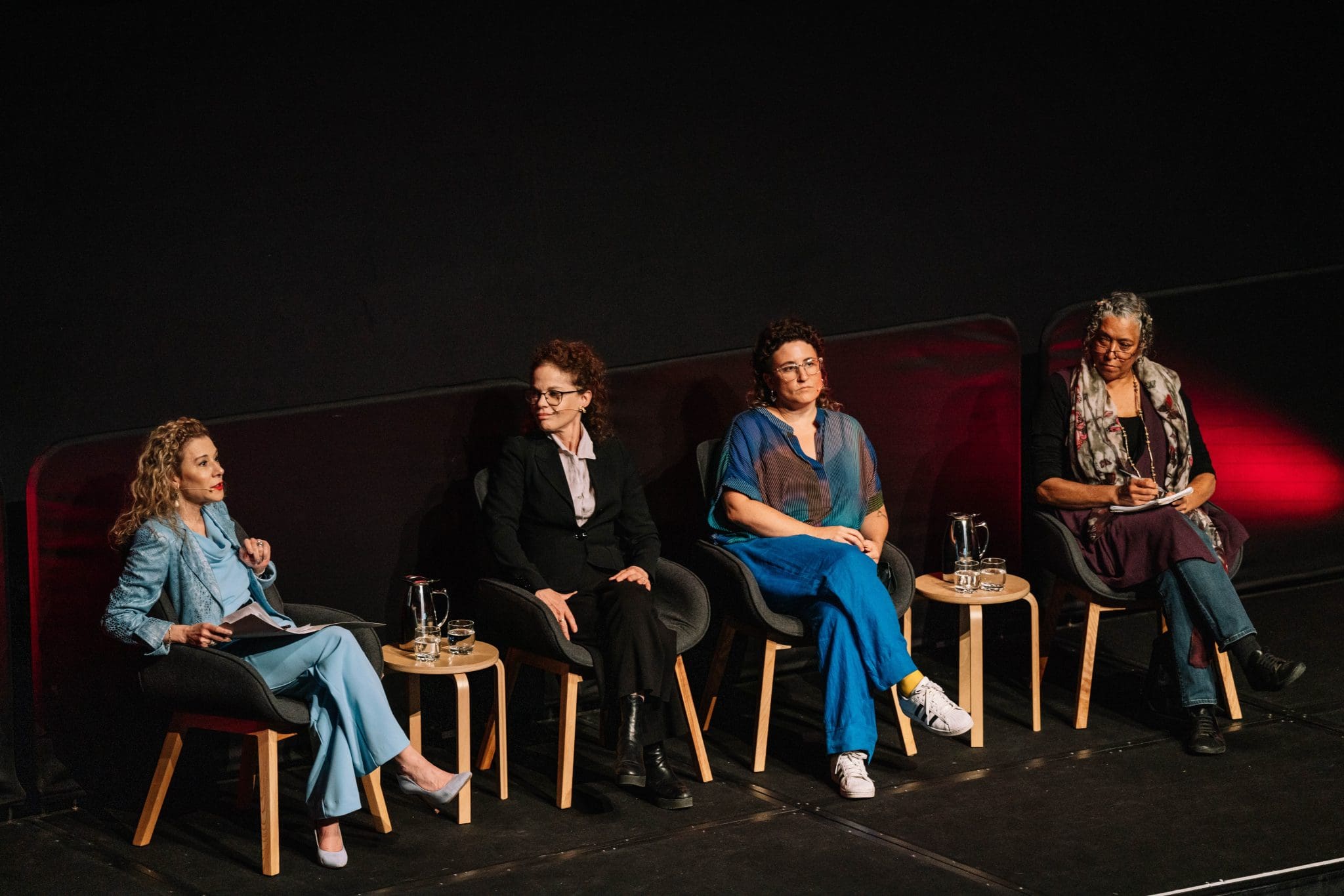
A question from actor Rachel Griffiths — appearing from the audience — prompted a conversation about whether media coverage and criticism was having the same improvements in representation, with actors often asked about their age instead of the production they were promoting. Thornton expressed hope for a hypothetical future where intersectional diversity was the standard and didn’t need to be acknowledged by the performers.
The next panel, “Bodies on screen”, involved short presentations from writer, speaker and appearance activist Carly Findlay, filmmaker and disability advocate Amy Marks, multi-hyphenate (actor, model, host and BLM, queer and body acceptance advocate) Milo Hartill and body image advocate and Australian of the Year Taryn Brumfitt.
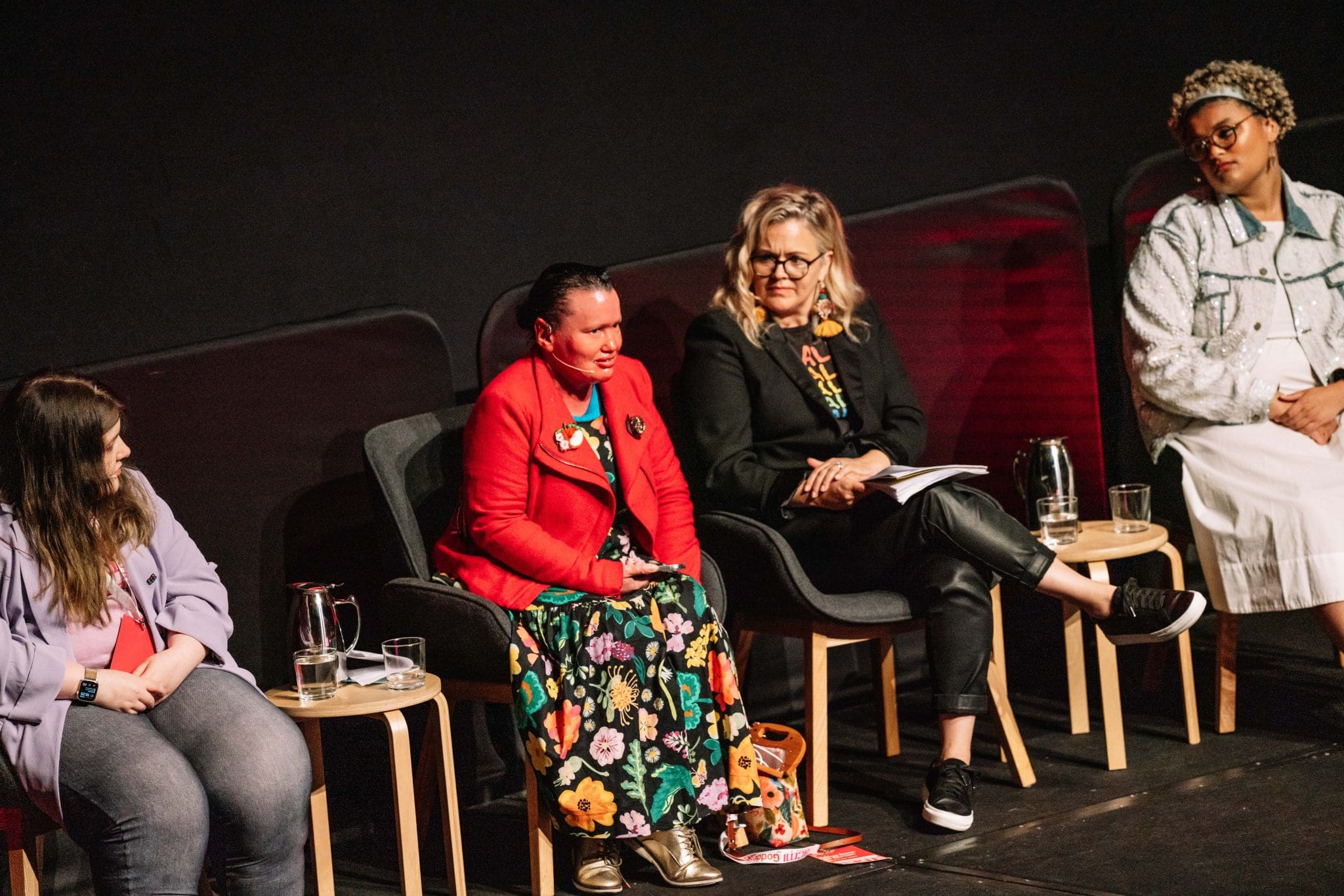
Marks spoke about how unless you were actively seeking it out or having it recommended to you, disability is not seen on screen, imploring the audience to consider what they can do to increase disability representation. Findlay told the audience about how disabled people are often having to do the work to change things, as disability tends to be a forgotten part of the diversity conversation. Hartill emphasised the power of the audience, encouraging people to tell companies what they liked and disliked about creative productions. Brumfitt shared some of the complicated process of working on Embrace and then Embrace Kids, emphasising that when you know better, you do better.
Marks made an important point about the role of the media. Media meets you where you are at. Whether that be a streaming service on your laptop or on the big screen in a cinema. It has the power to change how people think.
The final panel, named “What Next?”, included filmmaker and founder of Behind the Screens Santilla Chingaipe, SBS Content Industry Diversity Manager and Co-Chair of the Screen Diversity and Inclusion Network Michelle Cheng and Game Director of Australia’s first Aboriginal-led mobile game Future Folklore at GUCK Hayley Percy, with Fran returning to moderate.
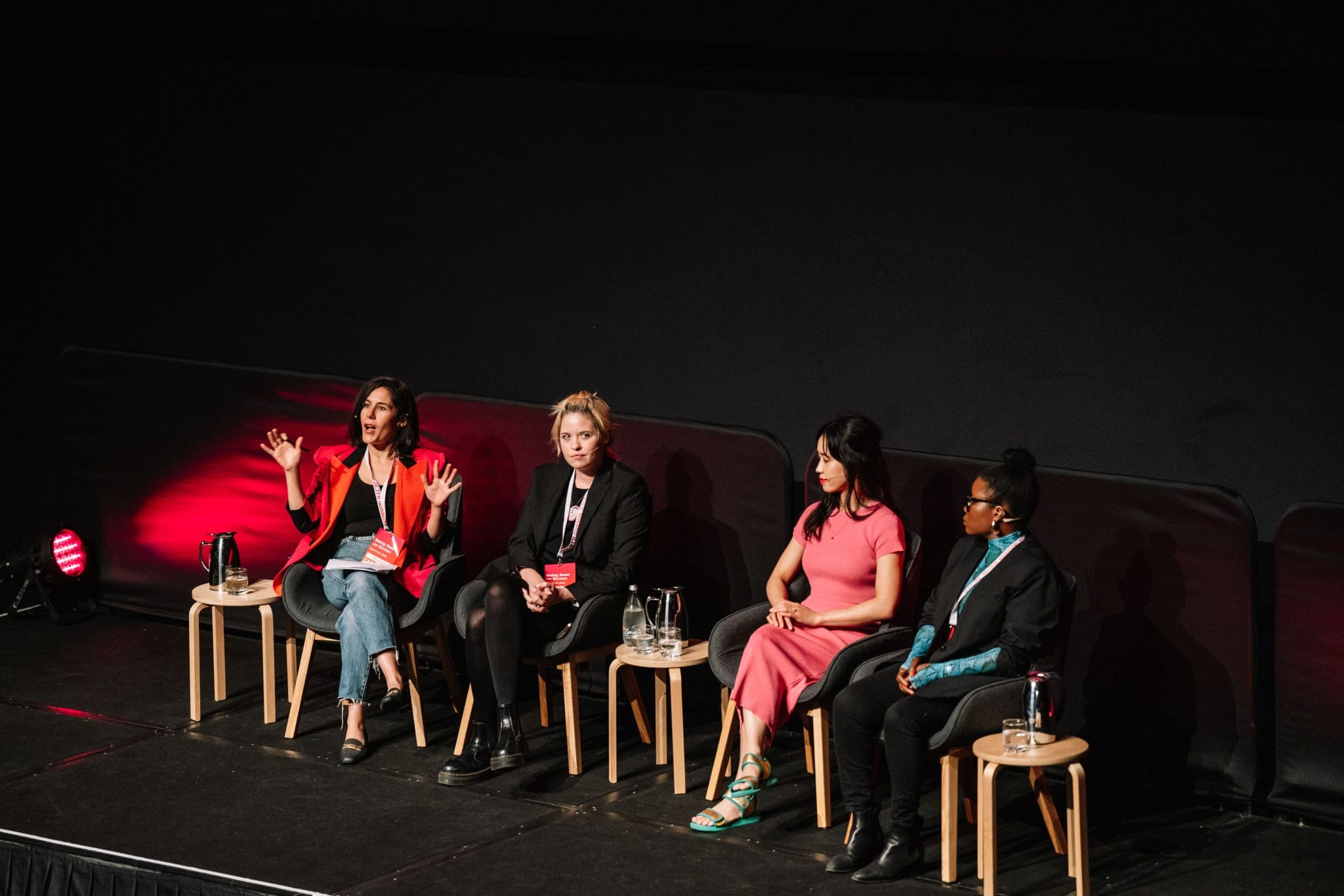
Chingaipe warned that waiting for the industry to make the change is a lost cause. Cheng suggested that allies were less likely to do the work, leaving the burden on marginalised people. Percy suggested that the change comes from the top, stemming from who you hire and who you work with. The panellists spoke about the complexities of funding processes and systems. With Percy explaining that existing funding structures were still colonial.
Many of the speakers emphasised the power of the media to tell important stories. Making the space needed to support and tell diverse stories is important. After a fascinating day of hearing from talented and impressive speakers, I was reminded how the stories we hear teach us how we understand ourselves, others and the wider world. Stories matter.
The conference was organised to coincide with the opening of ACMI’s new exhibition Goddess, which celebrates women and gender non-conforming individuals throughout time and place. To read Honi’s review of the exhibition, click here.




